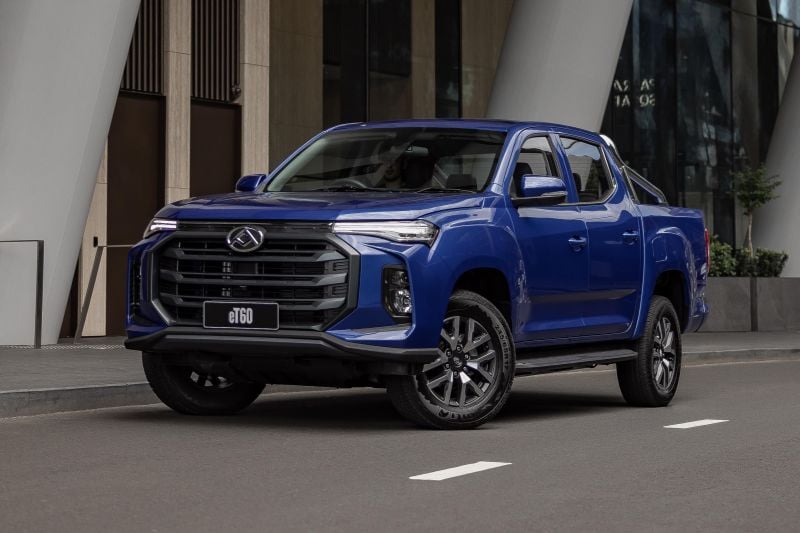Canberra is displaying the clearest path to the future of electric motoring in Australia.
The national capital claims the best combination of planning, commitment and infrastructure to make electric vehicles (EVs) successful in Australia.
The ACT’s electrification plan covers everything from electric vehicle incentives and a ban on combustion-vehicle sales to plans for home and public charging.
“If you live in Canberra, your next car is likely to be electric. Before 2030 it will be electric,” the deputy-director for environment, planning and sustainable development in the ACT, Geoffrey Rutledge, told CarExpert.
“In the passenger vehicle space, we are approaching a tipping point.
“The ACT is a national and global leader on climate action. We have decarbonised our electricity supply, committed to phasing out fossil fuel gas, and set a phase-out date for new light internal combustion engine vehicles of 2035.”
According to Mr Rutledge, the Canberra population is typically better educated and better paid than most Australians and that makes things easier for electrified motoring.
So, too, does the typical detached housing that – unlike other cities with a high percentage of units and apartments – makes for easier home charging.
“Many Canberrans are motivated to take action to reduce emissions. Now that the ACT is powered by 100 per cent renewable electricity, more than 60 per cent of emissions in the ACT come from transport,” he said.
“By transitioning to ZEVs (Zero Emission Vehicles), Canberrans can significantly reduce their household emissions footprint, making the most of those renewables.”
Mr Rutledge reports a fast rising percentage of electric vehicle sales, more than double the national average, and can see a faster pick-up rate in 2024 and beyond.
“New EV sales in the ACT have exceeded 20 per cent of all new sales, whereas other states were below 10 per cent. Canberrans push for a more sustainable way of living and are willing to embrace new technologies,” he said.
“We are seeing EVs that cost less than $40,000 entering the market. With operating costs significantly lower than a petrol or diesel vehicle, for many Canberrans, an EV will be the logical next vehicle they drive.”
The biggest key to the Canberra plan, said Mr Rutledge, is having a plan.
“The most important part of our approach to zero emissions vehicles (ZEV) is government setting a clear direction by aiming to achieve 80-90 per cent of new light vehicle sales being ZEVs in 2030 and outlining an intention to phase-out light internal combustion engine vehicles from 2035,” he said.
“These measures set a clear direction for industry and the community, along with the ACT commitment to achieving net zero emissions by 2045.
“The government being clear and concise in its intentions gives Canberrans and industry confidence in the future direction of the Territory.
“Canberrans know that there is financial support to help them buy their first ZEV, which helps to develop a future second-hand ZEV market, to make ZEV’s more accessible to more people.
“We are investing in expanding the electric vehicle charging network to ensure there is a public charging network Canberrans can rely. We are also sharing the lessons we have learnt in transitioning our own government fleet to ZEVs through a fleet advisory service providing free advice to businesses and organisations.”
The Canberra plan includes $15,000 interest-free loans through its Sustainable Household Scheme as well as two years free registration and stamp duty exemption.
The government has also spent more than $1 million a year on public charging since 2022, aiming for 180 public chargers by the end of 2025.
Electric vehicles make up more than half of the ACT’s government fleet and it is committed to using them whenever there is a fit-for-purpose replacement.
“As we are now four years into our government fleet transition program, we are seeing a number of EVs coming to the end of their leases. As leases on these vehicles end, the resale will help stimulate the second-hand EV market here in the territory, making electric vehicles more affordable and accessible to more of the community,” he said.
But Mr Rutledge admits there are still considerable hurdles and there is more than 10 years to go.
“We appreciate that transitioning to a ZEV is not right for everyone yet. In particular, the ute is a vehicle for which there are few zero emissions options in the Australian market,” he said.
“However, increasingly we are seeing a wider variety of ZEVs becoming available, internationally if not yet in Australia, including light commercial vehicles.
“The phase out-date of 2035 for ICE vehicles relates to new ICE vehicles. Canberrans still driving ICE vehicles already on our roads will be free to do so beyond 2035, but the intent is that purchasing a new light Internal Combustion Vehicle (ICE) will not be possible.”




